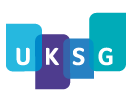Introduction
The massive open online course (MOOC) phenomenon continues to grow, with almost 60 MOOCs being offered by UK institutions. As their name suggests, MOOCs typically attract thousands of participants due to unlimited participation, are open to anyone to join, are free to undertake and are delivered fully online, thus negating the spatial limitations of a traditional classroom. Typically, they run for a period of between five and ten weeks. MOOCs are based on building connections, supporting collaboration and sharing resources, and are modelled on a delivery mechanism that requires little or no tutor input. Therefore, MOOCs require instructional design that facilitates large-scale feedback and interaction. Some MOOCs rely heavily on peer review and collaboration and are therefore considered to be connectivist MOOCs, whilst others use automated feedback mechanisms through objective online assessments and have been described as broadcast MOOCs. MOOCs could be described as being the ultimate in flexible education, with participants being able to study anything (nearly any topic), any time and anywhere. MOOC learners can also choose whether to complete the assessments or indeed continue with the course if it is not suited to them.
Edinburgh MOOCs
The University of Edinburgh launched their first MOOCs in 2013 via the Coursera virtual learning environment (VLE) platform. The University was the first international partner of Coursera, joining 13 other universities that were already in partnership with this MOOC provider. Six MOOCs from Edinburgh from a range of subjects were selected and delivered over a period of between five and seven weeks and attracted over 300,000 learners. The University of Edinburgh has delivered distance education fully online for over a decade and therefore moving into delivering MOOCs allowed the University to draw upon this strong expertise to try a different approach to online education. As a senior lecturer in animal nutrition with substantial experience in delivering fully online distance education degree programmes, I was keen to get involved with the delivery of MOOCs and my Equine Nutrition MOOC was part of the first set of MOOCs offered by Edinburgh University.
“… the ultimate in flexible education …”
Equine Nutrition MOOC delivery
The Equine Nutrition MOOC ran for the first time in January 2013 for a period of five weeks and covered many aspects of equine nutrition ranging from anatomy and physiology of the gastrointestinal tract to dietary management of horses/ponies affected with nutrition-related disorders. In each week, participants were provided with access to recorded video lectures, formative interactive quizzes, supporting notes and additional resources plus a discussion area. The formal assessment consisted of weekly multiple-choice tests, with three attempts per test permitted. The aim was to encourage and support learning as opposed to being strict about grades and number of attempts. I was supported in delivering the MOOC by three teaching assistants, who all received support through professional development in preparation for the launch. This consisted of a mixture of online and face-to-face workshops on what was required. The teaching assistants were paid for assisting with the running of the MOOC, which included monitoring the discussion areas, supporting peer interaction and setting up the online assessments. A support network for the teaching assistants was also established, facilitated though the University's Institute for Academic Development (IAD), which also provided the workshops for the teaching assistants. In addition to the pre-recorded lectures, we ran live video sessions at the end of each week, using Google Hangouts, to summarize and clarify the key concepts that the participants appeared to be struggling with during that week, as evidenced by their postings on the discussion areas.
“It seems that most students intend to explore the topic rather than complete the course …”
Course activity
Almost 24,000 people enrolled on the MOOC, with nearly 19,000 active users; therefore conversion from enrolment to active participation was over 80 percent. Moreover, there were 5,600 active users at the end of the course and therefore a completion rate of over 30 percent was seen for this particular course. In fact, 44 percent of active learners received a Statement of Accomplishment, which was provided by Coursera. This level of completion rate is substantially higher than the average, which is typically lower than 10 percent. To achieve a Statement of Accomplishment, participants were required to pass a series of five multiple-choice tests (one per week of the course), with the pass mark set at 60 percent. Participants were permitted three attempts for each test. The average score across all tests was then calculated to determine their total course mark. Although all courses on Coursera are required to provide participants with a Statement of Accomplishment, each university sets its own pass mark and assessment process. For Edinburgh University, this also differed across individual MOOCs. It seems that most students intend to explore the topic rather than complete the course, with the top ten reasons for dropping out reported to include that the course required too much time, was too difficult, or even too basic. Poor course design has also been highlighted as a reason for learners dropping out, as well as a lack of introduction to the course technology and format. Required readings from expensive text books has also been cited as a reason for learners not continuing with a MOOC as this significantly limited their access to the learning materials. It seems that the most important contributing factor to learners completing a MOOC is interpersonal interaction and support, which aligns with what is seen for online distance courses generally. For the Equine Nutrition MOOC, we believe the experience of the teaching team in online education coupled with the approach of having teaching assistants reply to key question on the discussion areas and the weekly video summary and feedback may have contributed to a higher completion rate than average.
Participant demographics
In order to minimize barriers to sign-up, Coursera does not require demographic information from participants. Therefore, this information had to be captured separately in a pre-session survey that was made available one week prior to the course beginning and remained open for a period of two weeks. There were respondents from all age categories, with the highest proportion from the 25-34 age group. Most had not taken a MOOC previously, with over 70 percent having achieved degree-level study as their highest level of academic achievement. Almost 90 percent of the respondents were female, which was higher that most other Edinburgh MOOCs and likely due to the subject matter and is typical for other online and on-campus courses taught in this subject area. The main country of origin of respondents was the United Kingdom, although there were significant respondents from the United States.
Participants' perceptions of the MOOC
Research into the MOOCs is still in its infancy and there is little information available on participants' perceptions of MOOCs; therefore, we provided participants with an optional self-completion online survey designed to assess participants' perceptions of taking the Equine Nutrition MOOC. The survey consisted of a series of questions (Likert items), where there was a choice of a number of fixed alternatives. For example, participants were asked to rate aspects of the MOOC on a scale of one to five, with five being excellent and one being very poor. Questions focused on the overall MOOC experience, engagement with the course, suitability of the leaning materials and interaction on the course. There were over 4,000 responses to the survey with over 90 percent of respondents rating the MOOC as either very good or excellent. In terms of the suitability of the learning materials, almost 90 percent of respondents rated the content and the video lectures as either very good or excellent (Figure 1).
Respondents' rating of the learning materials
“… one of the key aims of online distance education is quality interaction …”
Over 80 percent of respondents rated the quizzes as either very good or excellent; however, this excellent/very good rating decreased to fewer than 60 percent for the discussions. In terms of engagement with the course, over 90 percent of respondents watched the videos or undertook the assessed quizzes every week (Figure 2), but only just over 10 percent took part in the online discussions on a weekly basis. In fact, over 50 percent of respondents either never or seldom engaged with the discussions boards. When asked to rate their interaction with the course, the majority of respondents stated good (Figure 3), with a shift away from the very good or excellent selected when asked to rate the course materials. It was thought by the MOOC tutors that there was an expectation by the course participants of one-to-one interaction with the tutor, which may have affected their eventual rating of course interactions. However, when asked if they expected one-to-one tutor interaction, over 70 percent of respondents said not they did not have that expectation. It may be that whilst they did not expect this one-to-one interaction, they may have preferred this approach. Certainly, one of the key aims of online distance education is quality interaction and it is likely that the lack of this on large MOOCs potentially affected the participants' enjoyment of the course in that respect. Moreover, quality interactions with peers is also important in online learning and this may not always be the case in these open access courses For example, trolling has been cited as being a reason for participants not completing or for lack of enjoyment of a MOOC. Trolling in online courses is considered as behaviour that disrupts forums and causes upset to others and it is important from the outset to be clear about the need to understand ‘netiquette’ in online communication.
Respondents' engagement with the learning materials
Respondents rating of their interactions on the course
Lessons learned
There are many lessons to be learned in the delivery of a MOOC, which in many ways differs greatly from delivering a fully online degree programme to university students. Firstly, content is being delivered to such a diverse range of learners and, due to the enormous numbers of participants enrolled in the courses, it is impossible to provide one-to-one tutor interaction akin to that provided on degree programmes. Consequently, MOOCs need to be designed in such a way as to promote the sense of ‘tutor presence’ on the course by using video messages, live Google Hangout sessions, and responses to queries and issues that are course-specific and relevant to many learners with similar questions. Short videos are important to keep the learners' attention; indeed, six minutes has been reported to be the optimal video length for learner engagement. Engagement with the discussion boards is also important, but differs greatly from that provided on traditional online degree programmes due to the huge numbers of students involved and the greater opportunity for problematic behaviours like trolling. As mentioned, it is extremely important to state the etiquette required on the discussion areas at the start of the MOOC and to actively encourage constructive discussion of topics and issues.
“… six minutes … the optimal video length for learner engagement.”
Conclusions
MOOCs are increasing in popularity, with many more institutions and academics becoming involved with their delivery. It would appear that the key areas that need careful consideration, as with any online course, are the course design and building in interactivity that is beneficial to the learner. Key aspects are ensuring that learning materials, for example videos, are concise and that clear expectations of what the course will provide are provided at the outset. A clear statement of the level of interaction that will be provided by the course tutors is essential, along with clear guidance on good etiquette on the discussion areas. For this particular MOOC, completion rate was high and was attributed to the level of tutor interaction and ‘presence’ on the course. However, further research is required to fully understand the MOOC environment and learner to enable us to deliver MOOCs that are of high educational value.
“…greater opportunity for problematic behaviours like trolling.”



